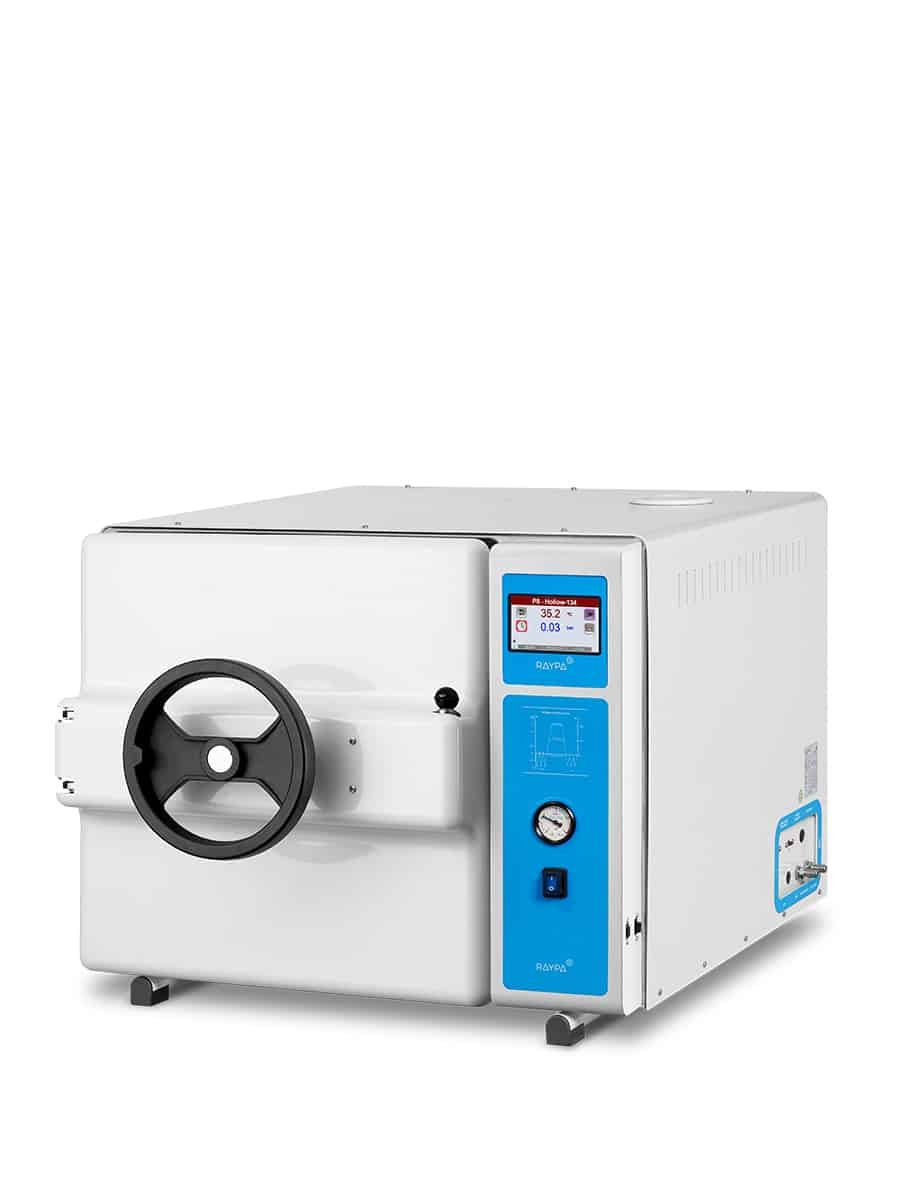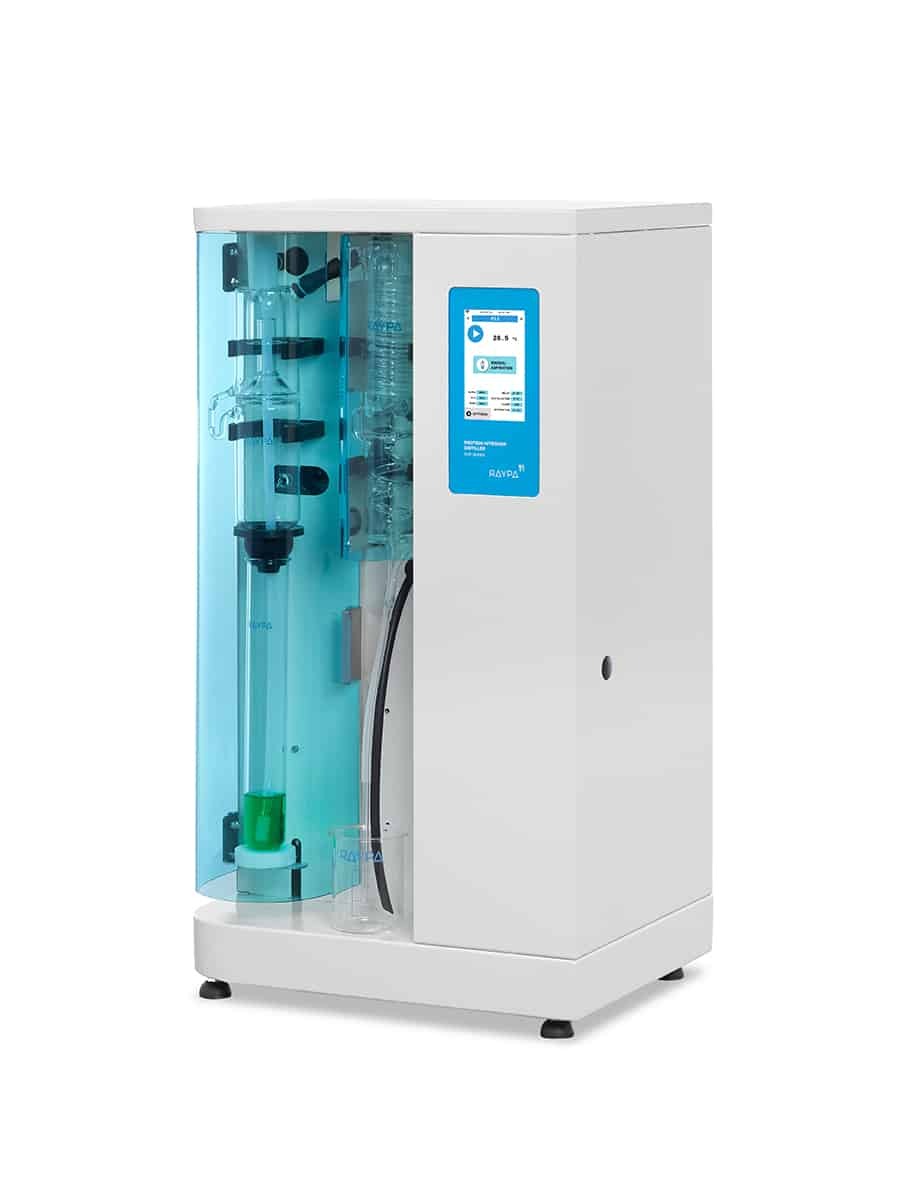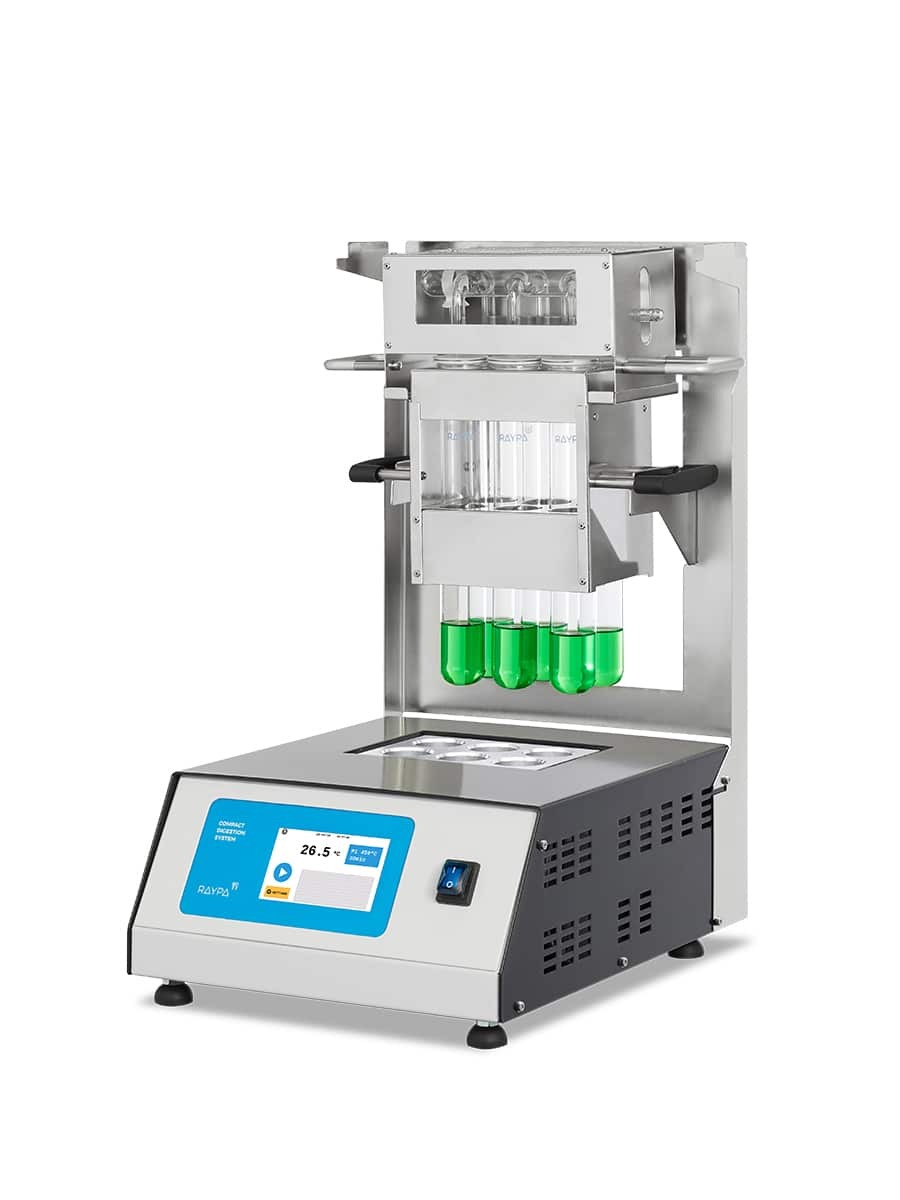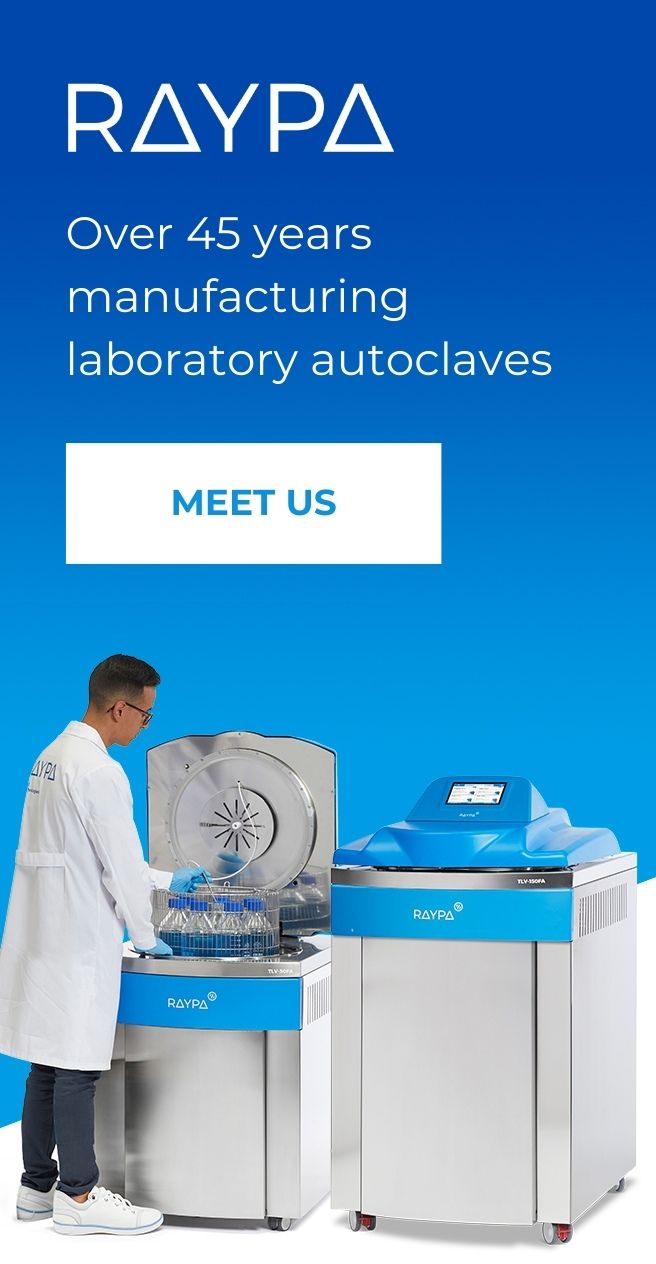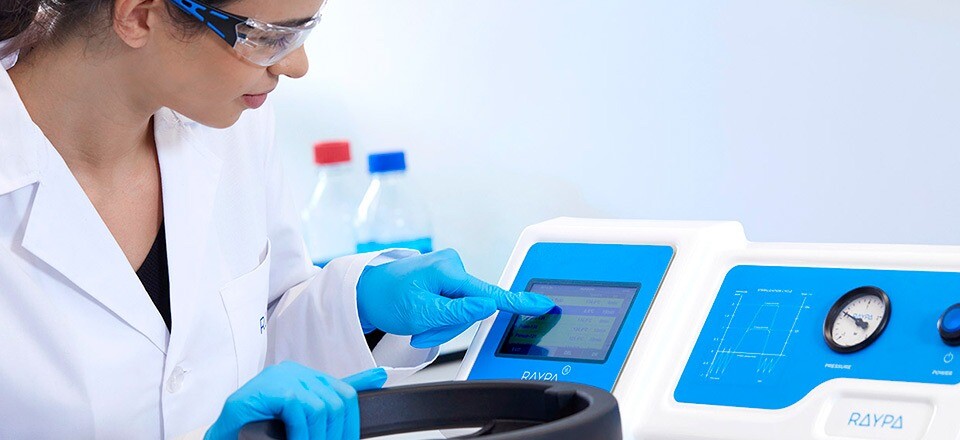Essential tips for proper autoclave loading
Explore the essential tips for correctly loading an autoclave to guarantee effective sterilization. Delve into this article to uncover all the necessary insights and best practices.

While autoclave operators often prioritize selecting the correct sterilization program, the effectiveness of sterilization significantly depends on the handling and arrangement of products within the autoclave.
To ensure satisfactory results, it is essential to rigorously adhere strictly to the manufacturer’s recommendations and established protocols, encompassing everything from initial preparation and choosing the appropriate support to loading the products into the autoclave and their subsequent removal.
Products should be handled with precision and systematically distributed within the chamber. Prior to loading, it is advisable to observe the following guidelines to ensure safe handling of materials:
- Protective gear: Wear rubber gloves of sufficient thickness to safeguard your hands throughout the process. Utilize safety gloves when handling sharp objects.
- Use of trays: Employ a tray to transport materials, avoiding direct hand contact. Do not handle any product contaminated with bioharzadous waste directly with bare hands.
- Post-handling hygiene: Discard used gloves after handling and wash hands thoroughly.
Additionally, it is crucial to perform thorough cleaning of the products to remove any residues before starting the sterilization process. Follow these steps for effective cleaning:
- Rinse instruments with water immediately after use. Organize metal instruments into groups based on their composition (e.g., stainless steel, aluminum, brass) to streamline the process.
- Next, proceed with washing. You can choose to use an ultrasonic bath or perform manual washing using a germicidal solution and water. For ultrasonic baths, utilize a specific detergent for optimal results.
- Following washing, ensure a thorough rinse and carefully inspect to confirm the absence of residues. Repeat the cleaning process if necessary to ensure complete cleanliness.
- To prevent limescale stains, conduct a final rinse with demineralized water. If using tap water, ensure the materials are adequately dried.
Autoclave loading
Loading products correctly into the autoclave is essential for achieving complete and uniform sterilization. Each type of product has its own specific requirements, so it is important to handle them appropriately to ensure optimal outcomes.
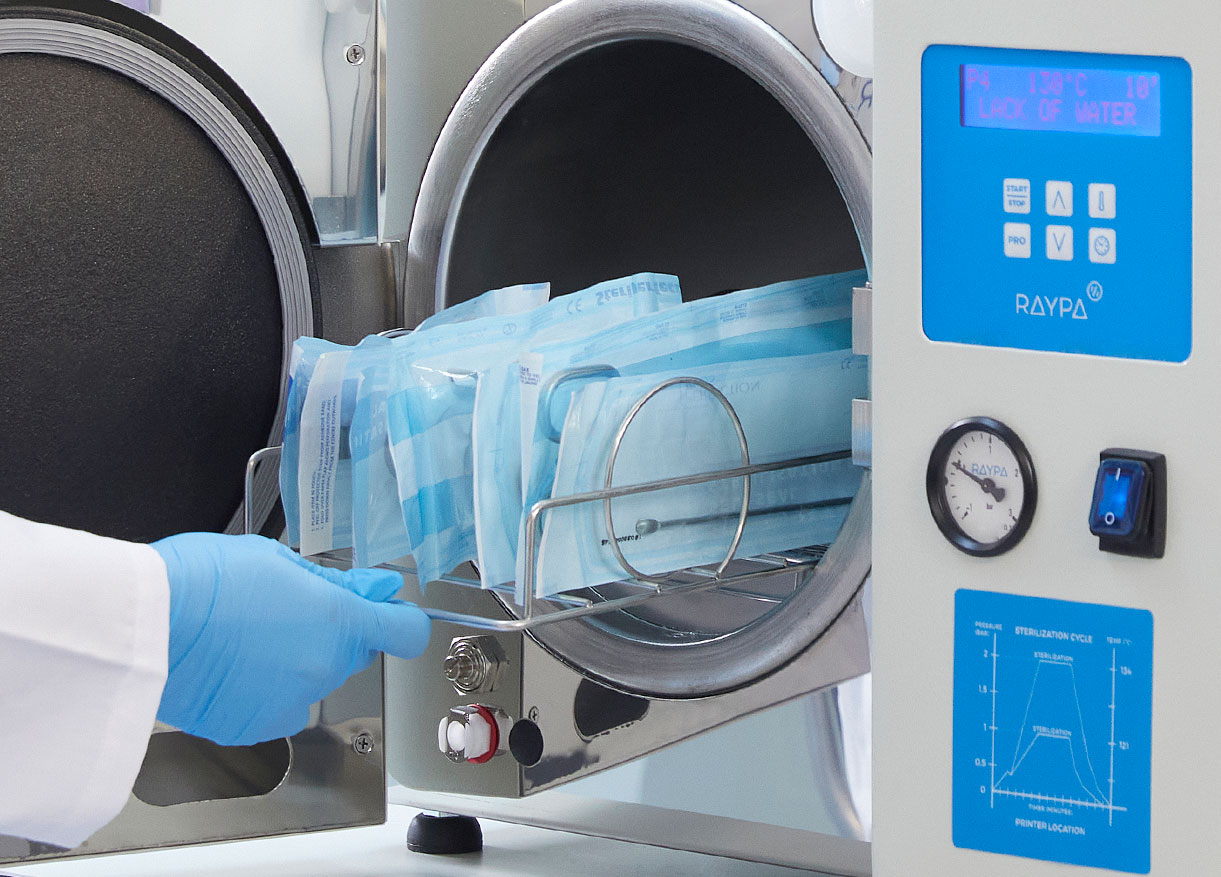
By following these guidelines, you can ensure that each item is positioned optimally:
- Use of appropiate accessories: Items should not be placed directly into the autoclave chamber or against its walls. Utilize the provided accessories to position items correctly.
- Separation of items: Each item must be placed separately to avoid grouping or stacking. For stacked baskets, ensure the bottom of the upper basket does not contact materials in the lower basket. A simple rule is that all objects should be easily accessible.
- Avoid overloading: Do not overfill trays or baskets. Overloading can obstruct proper steam flow, compromising sterilization quality and leading to moisture and condensation issues.
- Diversity in instrument composition: Consider the variety of materials in the instruments you are loading. Ideally, load items as uniformly as possible. Separate items made of different materials, such as stainless steel or aluminum, by placing them in different trays or leaving space between them to prevent adverse reactions
- Heavier items on the bottom: Position heavier items at the bottom to prevent wobbling during the sterilization process, loading, or unloading.
- Safety first: For large and heavy loads, consult the manufacturer about integrated or mobile cranes to handle loads safely, avoid operator injuries, and prevent damage to the chamber walls.
- Open position: Arrange items in an open manner to allow steam circulation. Open lids and valves to avoid closed areas that could impede steam penetration.
- Graduated cylinders, test tubes, and similar objects: Place graduated cylinders, test tubes, and similar objects at a slight tilt to prevent water accumulation if a drying program is not used.
- Mixed bags: As a general rule, mixed bags should be placed in wire baskets. Avoid having the bag flaps at the bottom, as they can condense and wet the rest of the material.
- Sealed containers and bottles: Slightly open bottles to prevent internal overpressure and potential breakage. For hermetically sealed items with internal cavities, use programs with pressure support to prevent deformation or breakage.
- Protecting stainless steel instruments: Place a piece of paper between stainless steel instruments and the tray to prevent direct contact and potential adverse interactions, thereby preserving instrument integrity.
- Tray and basket support: Do not stack trays or place them in direct contact with the autoclave walls. Always use supports designed for this purpose.
- Document your procedures: Document specific procedures for each type of load. Ensure all personnel operating the autoclave are properly trained and have easy access to this information.
Proper product arrangement not only enhances the sterilization process but also maintains the integrity of both the items and the autoclave. By following these guidelines, you ensure consistent and reliable sterilization results.
Loading liquids and culture media in an autoclave
When sterilizing liquids or solutions such as culture media or chemicals, it is crucial to pay attention to the total amount of liquid per container. As a general rule, for an Erlenmeyer flask, it is recommended to fill it to three-quarters of its maximum capacity. If using a beaker, the suggested volume to fill is half of its maximum capacity. Having too much liquid increases the risk of spillage during heating or cooling.
When using containers with screw caps, ensure they are loosen by a quarter of a turn to allow ventilation. Tight caps may cause containers to break due to pressure buildup during the sterilization process.
When sterilizing liquids, allocate sufficient time to ensure a succesful sterilization, particularly for larger volumes, which require more time to reach the desired temperature uniformly.
If your autoclave is equipped with a flexible probe, place the probe inside a reference container filled with liquid. Position this container at the center of the top layer, as this tends to be one of the coldest points within the autoclave. This ensures accurate temperature monitoring.
Finally, whenever possible, use a sterilization program specifically designed for liquids. These programs adjust the cooling phase specially, preventing splashes caused by the boil-over effect, breakages due to rapid depressurization, and burns from handling excessively hot content by controlling the cooling rate.
Loading glassware in an autoclave
Glassware, including volumetric flasks, Erlenmeyer flasks, Büchner flasks, graduated cylinders, test tubes, and watch glasses, is a cornerstone of laboratory operations across biochemistry, food science, and industry sectors. However, to ensure they are sterilized correctly, it is to verify that the glassware is compatible with autoclave sterilization to avoid any risk of damage or breakage.
When loading glassware such as jars and bottles, proceed with caution to prevent breakage. It is best to place them in an upright position and ensure they do not come into direct contact with each other. This minimizes the risk of damage during the process and subsequent removal.
Furthermore, given that most glassware functions as containers, it is essential to position them inverted during sterilization. This practice is particularly crucial for preventing condensate accumulation post-sterilization, especially in autoclaves lacking a final vacuum drying feature.

For glass items, the selected sterilization program should incorporate a vacuum drying phase following the sterilization phase. This ensures that the glassware can be removed and used immediately, eliminating the need for additional drying in an external oven.
Lastly, when sterilizing glassware intended for culturing microorganisms or animal cells, it is imperative to use purified water. This prevents the accumulation of salts on the glass surfaces, which can build up over time and adversely affect the fertility and viability of the culture media.
Loading plastic tubes in an autoclave
Before sterilizing plastic tubes in an autoclave, it is imperative to confirm the material’s compatibility with autoclaving to prevent heat damage, which could complicate subsequent chamber cleaning.
When arranging plastic tubes or similar items in the autoclave, ensure their placement allows for the free circulation of steam. Avoid excessive bending of the tubes, as this can compromise sterilization efficacy and potentially damage the tubes. For optimal sterilization, the tubes should be kept as straight as possible.
For tubes with double chambers or complex geometries, it is necessary to use an autoclave with fractional prevacuum. This ensures that steam effectively penetrates all internal and external surfaces of the tubes, guaranteeing thorough sterilization.
Loading porous solids, textiles, and wrapped objects in an autoclave
When processing porous loads, textiles, or items wrapped in materials such as aluminum foil or paper within an autoclave, it is imperative to adopt precise practices and adhere to established protocols. A fundamental principle in this procedure is the strategic arrangement of objects within the autoclave, ensuring they are not stacked on top of each other. This measure facilitates proper steam flow and uniform penetration into each item.
Another critical aspect involves managing the autoclave chamber’s capacity. Each object should have adequate space around it to ensure optimal steam circulation. This consideration not only enhances the process’s effectiveness but also mitigates the risk of cross-contamination.
For wrapping glass items, aluminum foil is commonly employed due to its heat resistance. However, it is essential to select aluminum foil specifically designed for autoclave use, which includes an additional plastic layer to protect against damage and material migration during the process. This precaution ensures the integrity of the wrapping and, consequently, the effective sterilization of the contents. It is important to note that these materials should be discarded after a single use.
In the healthcare sector, plastic bags and wraps are extensively utilized to protect surgical instruments and other items from contamination. The choice of wrap depends on the size and nature of the object to be sterilized. Furthermore, the safety of these packages is often reinforced with autoclave tape, which changes color upon reaching specific temperatures, indicating proper sterilization. It is crucial to use the appropriate control tape, as alternatives like masking tape are not designed to withstand the high-temperature conditions within an autoclave.
Porous materials, such as ceramics and textiles, including clothing, present additional challenges due to their hydrophilic nature and microscopic cavity-filled structure. In these cases, it is imperative to use autoclaves equipped with pre-vacuum and post-vacuum systems. These systems are designed to remove the cold air trapped within the porous structures of the materials, creating an ideal environment for hot water vapor to penetrate even the most remote areas. This deep penetration of steam is essential for achieving uniform and complete sterilization of each object. Subsequently, the final drying system effectively removes all residual moisture from the load.
Loading objects with complex geometries in an autoclave
Sterilizing objects with complex geometries, such as bioreactors, items with tubing, medical implants, or instruments with multiple chambers, necessitates the use of autoclaves with specialized programs designed for these types of loads and requires additional precautions.
Firstly, it is essential to ensure that the objects are positioned within the autoclave in a manner that does not impede steam circulation between them. Often, manufacturers provide supports or containers specifically designed for the autoclave sterilization of these objects. Additionally, it is advisable to consult the manufacturer’s instructions regarding the sterilization of each item, as these may contain detailed guidelines on preparation, packaging, placement, and appropriate sterilization cycles.
For instruments that include valves or movable parts, it is generally recommended to disassemble or open them as much as possible to facilitate steam access. This practice ensures that all internal surfaces are adequately exposed to the sterilizing steam.

Finally, To ensure effective sterilization, it is crucial to conduct regular verification tests. These include the Bowie-Dick test or vacuum test to check for air removal and steam penetration efficacy, and the use of biological or chemical indicators to confirm the effectiveness of each sterilization cycle. Additionally, maintaining a detailed record of each sterilization cycle is essential. This record should include specific data such as the type of item sterilized, the sterilization cycle applied, and the results of sterility indicators. This documentation supports quality assurance and compliance with regulatory standards.
Loading laboratory and biohazardous waste in an autoclave
Handling laboratory waste, including biohazardous materials, necessitates caution and diligence. These wastes are typically collected in specific bags, which can result in the formation of cold air pockets within the waste set. Therefore, it is crucial to use an autoclave equipped with pre-vacuum and post-vacuum systems to properly treat this type of material.
It is essential that these wastes are placed in bags specifically designed for autoclaving and that operators handling these loads wear appropriate personal protective equipment (PPE). When processing solid objects, ensure that no sharp or pointed items are included that could puncture the bags. As a general rule, the bag should be filled to a maximum of two-thirds of its capacity.
When processing biohazardous waste, always use a secondary container labeled specifically for this purpose. This container should be as large as feasible and handled only by authorized personnel to minimize risk.
When autoclaving liquids, use bottles that can withstand the autoclaving process. These bottles should not be filled beyond half of their capacity to prevent spills and allow for the thermal expansion of the liquid. The caps of these containers should be slightly loosened to avoid internal overpressure
Additionally, it is crucial to rigorously follow local regulations and guidelines for proper disposal. This includes maintaining a detailed record of all cycles performed, specifying the date, time, program used, and the operator who performed the task. Periodic use of chemical and biological control indicators is necessary to verify the effectiveness of the sterilization process. Strict adherence to the manufacturer’s preventive maintenance plan is also essential to ensure the autoclave’s proper functioning.
By following these practices, we ensure the safety of those working with the waste and compliance with established protocols.


